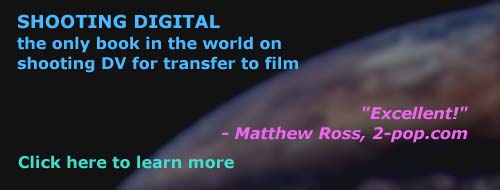How does Atlantis compare with other methods of converting PAL
to NTSC?
Standards conversion (a service) or aDVanced PAL-NTSC Converter
(Windows only)
- A standards converter is a $100K+ machine which uses dedicated
circuitry to analyze and blend video information to do the conversion
from PAL to NTSC or vice-versa. (An example of this is the Snell
& Wilcox Alchemist standards converter). The aDVanced PAL-NTSC
converter software program uses the same principles. Motion is
analyzed and each object on the screen is assigned a motion vector
(like an arrow that points in the direction of motion) and this
information is used to figure where the object should have been
between two different fields in the video. This re-created "in-between"
field is used to simulate what the NTSC camera would have seen
at that point in time. The standards converter does a good job
of this but it can be confused by erratic movement, rapid cutting,
or objects passing behind or in front of other objects. The aDVanced
converter software has this problem as well, but it has another
problem which is that the motion vectors are computed for relatively
large areas of the screen, and its "in-between" frames show crude,
block-like artifacts resulting from moving parts of the image
around like a jigsaw puzzle.
- Either the standards converter or the aDVanced converter software
can also be used to simply blend two fields together to create
the in-between field. The block-like artifacts are gone, but replaced
with double-images as a result of the blending. The double-images
are most noticable when an object passes across the screen rapidly,
and also results in twice as much motion blurring as compared
to the original video.
- In Atlantis, there are no block-like artifacts because motion
vector processing is not used. There are also no double-image
effects or excessive blurring, because fields or frames are never
blended together. Instead, each frame of PAL is converted to a
progressive-scan image (as if it were shot on 25 fps film) and
then printed to either 2 or 3 NTSC fields as required to play
back at the correct speed. The 2 field / 3 field method is the
same method used to convert film to NTSC, so the results look
very much like film converted to video.
Canopus Procoder (Windows only) - After Effects (Windows/Mac)
- Final Cut Pro (Mac)
These software methods use the field-blending method exclusively.
The comments in 2 and 3 above apply to these programs.
Vegas Video (Windows Only)
Vegas Video deinterlaces PAL and uses a field-repeat method to
convert to NTSC. However their deinterlacing method reduces vertical
resolution by 50%.
Premiere (Windows/Mac) and many other Non-Linear Editors
Frame-based non-linear editors can be used to convert PAL to NTSC,
however they use a frame-skip method which results in very bad motion judder.
Join the discussion group on DVFilm transfers and DVFilm software,
click here.


